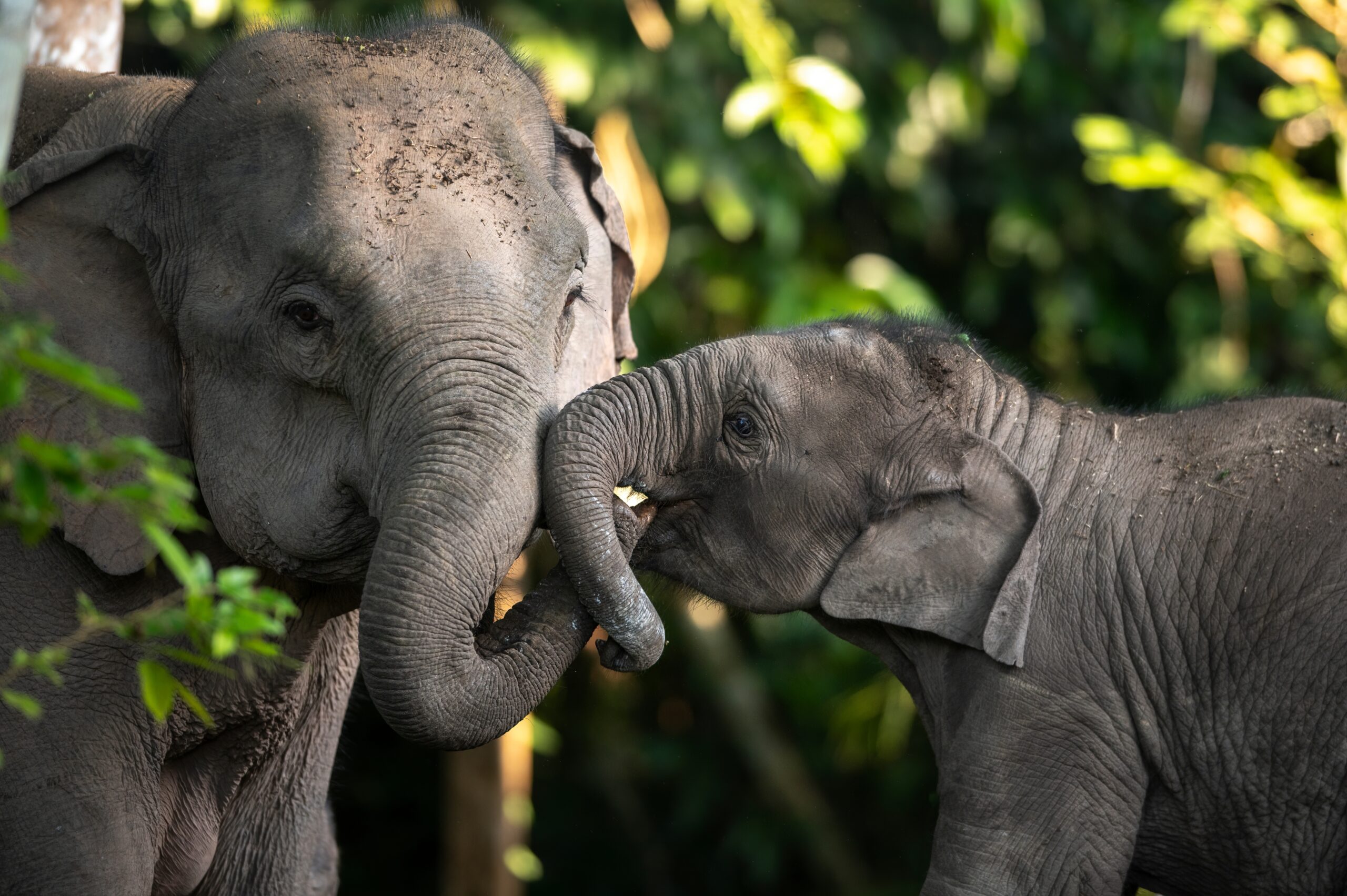Reptiles are some of the most fascinating creatures on Earth, with unique adaptations that have allowed them to thrive for millions of years. While many people are familiar with well-known species like crocodiles and pythons, there are lesser-known reptiles that are just as captivating and, in some cases, downright fearsome. These hidden gems of the reptile world possess incredible abilities, from venomous bites to near-perfect camouflage, making them both awe-inspiring and dangerous in their own ways. In this article, we’ll explore 20 little-known reptiles that stand out for their intriguing traits and powerful survival strategies.
Dumeril’s Boa (Acrantophis dumerili)
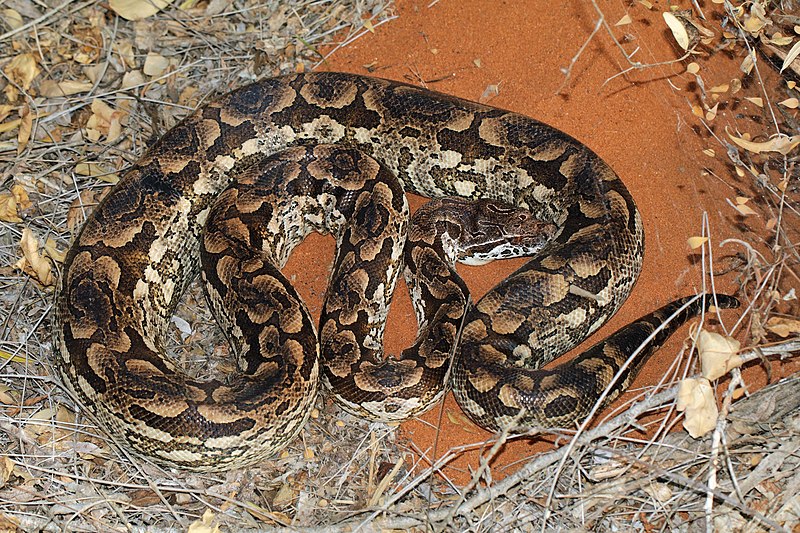
Dumeril’s Boa is a non-venomous snake native to Madagascar, with an impressive ability to camouflage among leaf litter. Growing up to 8 feet in length, this boa is an apex ambush predator, relying on its strength to constrict prey. It possesses a calm demeanor, yet its power is not to be underestimated. Dumeril’s Boas have robust bodies that allow them to overpower small mammals and birds easily. The species’ natural camouflage makes it an efficient predator, capable of disappearing in plain sight. With its piercing eyes and silent hunting method, it is both a wonder of nature and a force to be reckoned with. Though not aggressive, its fearsome strength and stealthy approach evoke a sense of awe.
Tuatara (Sphenodon punctatus)
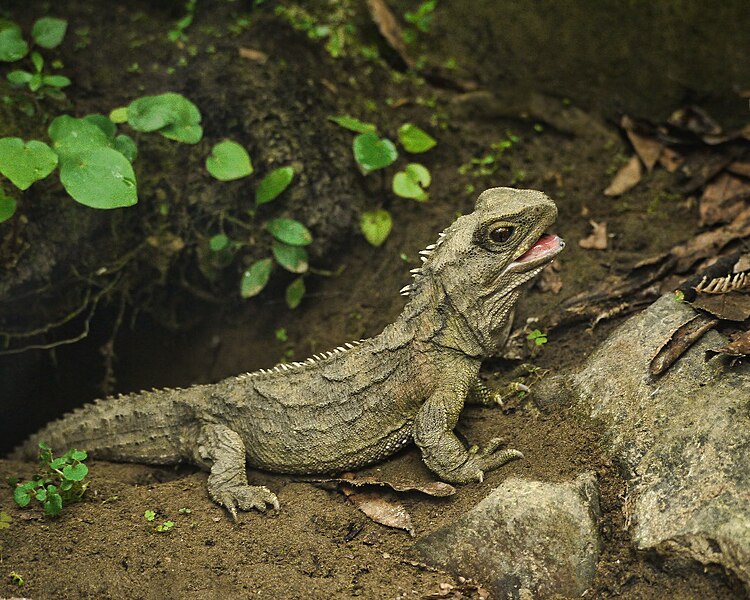
The Tuatara, a reptile endemic to New Zealand, is often referred to as a “living fossil” due to its ancient lineage. Despite looking like a small lizard, this creature is genetically distinct, representing a relic of a 200-million-year-old lineage. With sharp, serrated teeth fused directly to its jawbone, it can efficiently hunt insects and small vertebrates. One of its most fascinating traits is a “third eye” on the top of its head, thought to aid in regulating circadian rhythms. Though it may not seem intimidating at first glance, its slow metabolic rate and longevity give it a mystique of survival and endurance. This cold-blooded reptile can live over 100 years, outlasting many of its predators. Its unique evolutionary history and survival tactics make the Tuatara an enigmatic and formidable creature.
Gila Monster (Heloderma suspectum)
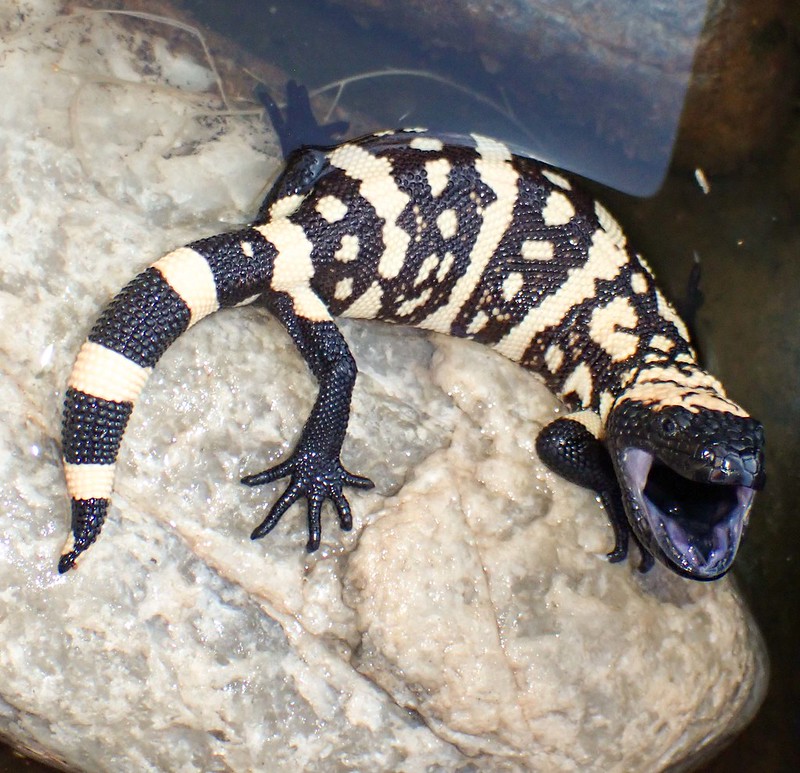
The Gila Monster is one of the few venomous lizards in the world, and its bite, while rarely fatal to humans, is excruciating. Found in the southwestern United States and northern Mexico, this reptile uses venom delivered through grooves in its teeth to immobilize prey. Its distinctive beaded skin serves as both protection and camouflage in desert environments. Despite its slow movements, the Gila Monster can strike unexpectedly fast when threatened or hunting. It feeds primarily on bird eggs and small mammals, using its powerful jaws to crush and subdue its meals. Though fearsome, its survival strategy lies in energy conservation, going for long periods without food. With its venomous bite and striking appearance, the Gila Monster is both a marvel of desert survival and a creature to be respected.
Philippine Sailfin Lizard (Hydrosaurus pustulatus)
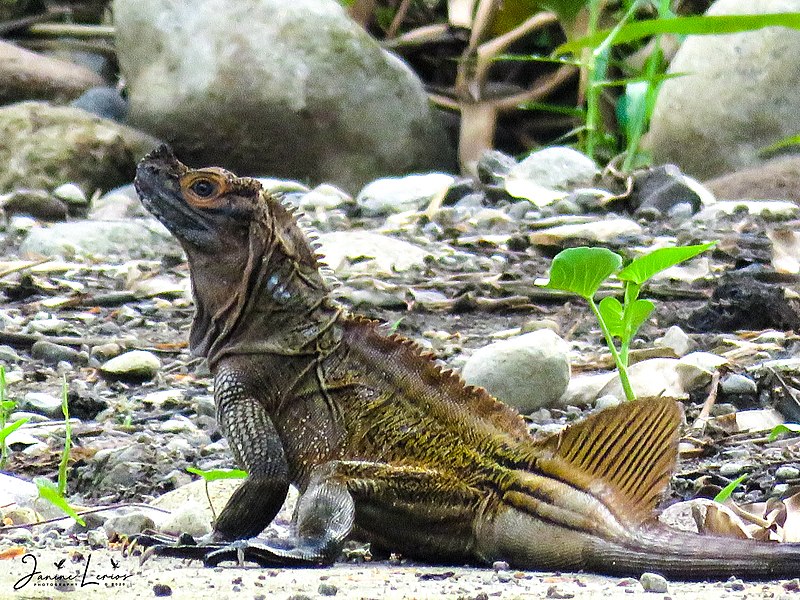
The Philippine Sailfin Lizard is a spectacular reptile that inhabits the rivers and forests of the Philippines. It boasts a striking sail-like fin on its back, used for display during courtship and to deter predators. With webbed feet and an aquatic lifestyle, it can swim with remarkable speed to escape danger. This herbivorous lizard feeds mainly on fruits and leaves but will occasionally hunt insects, making it a versatile survivor. It grows up to 3 feet long, with males displaying vivid hues of blue, green, and purple. Its ability to run on its hind legs and swim fluidly adds to its agility and adaptability in diverse environments. The Philippine Sailfin Lizard’s dazzling appearance and resourceful nature make it both fascinating and awe-inspiring.
Armenian Viper (Montivipera raddei)
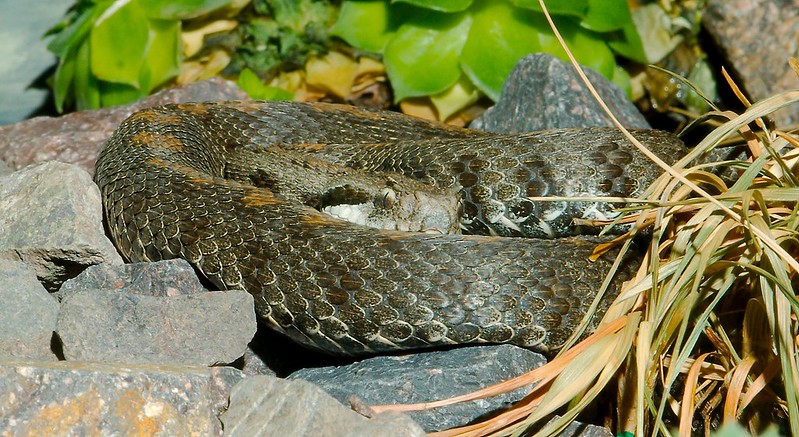
The Armenian Viper, native to the rocky highlands of Armenia and neighboring regions, is a venomous snake with potent hemotoxins in its bite. Its thick, muscular body is covered in a complex pattern of scales that offer superb camouflage against the rocky terrain. With a length of around 3 feet, it relies on ambush tactics to capture rodents, lizards, and birds. Though it prefers to avoid humans, its venom can cause severe tissue damage and blood clotting disorders if a bite occurs. The Armenian Viper’s fearsome reputation stems not only from its venom but also from its territorial nature. This species thrives in rugged, hard-to-reach habitats, making it a hidden danger in the mountains. Its impressive adaptation to harsh environments and lethal bite make it a reptile to respect from a distance.
Komodo Dragon (Varanus komodoensis)
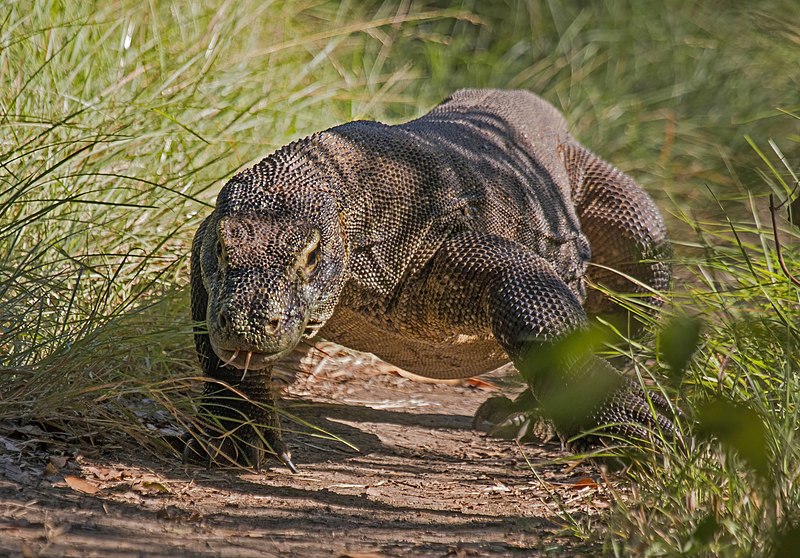
As the world’s largest living lizard, the Komodo Dragon strikes fear into the hearts of its prey. This massive reptile, which can grow up to 10 feet long, has razor-sharp teeth and a venomous bite that causes paralysis and blood loss in its victims. Found in Indonesia, it is both a scavenger and an active predator, known to take down large animals such as deer and water buffalo. Despite its size, the Komodo Dragon is a stealthy hunter, capable of sprinting at speeds of up to 12 miles per hour in short bursts. Its venom, combined with harmful bacteria in its saliva, makes its bite particularly deadly. While attacks on humans are rare, they do occur, adding to the reptile’s fearsome reputation. With its ancient lineage, the Komodo Dragon is a living relic of the age of the dinosaurs.
Caiman Lizard (Dracaena guianensis)
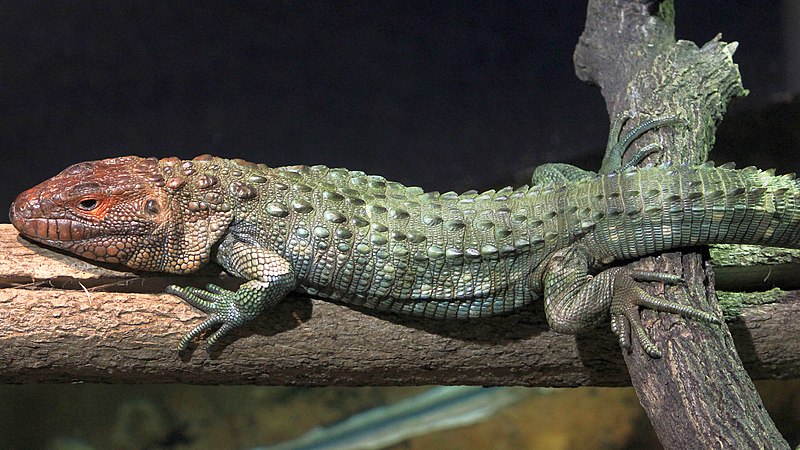
The Caiman Lizard, native to South America, is a powerful semi-aquatic reptile that thrives in swampy habitats. Its heavy, armor-like scales resemble those of caimans, giving it added protection from predators. Equipped with strong jaws, it can crush the tough shells of its favorite prey, such as snails and crustaceans. This striking reptile, with a vibrant green body and red-orange head, is an excellent swimmer, often found basking on tree branches near water. Its diet and muscular build make it a formidable predator in its ecosystem. Though not typically dangerous to humans, its appearance and strength give it a fearsome presence. The Caiman Lizard’s adaptability and powerful build make it an awe-inspiring creature.
Mangshan Pit Viper (Protobothrops mangshanensis)
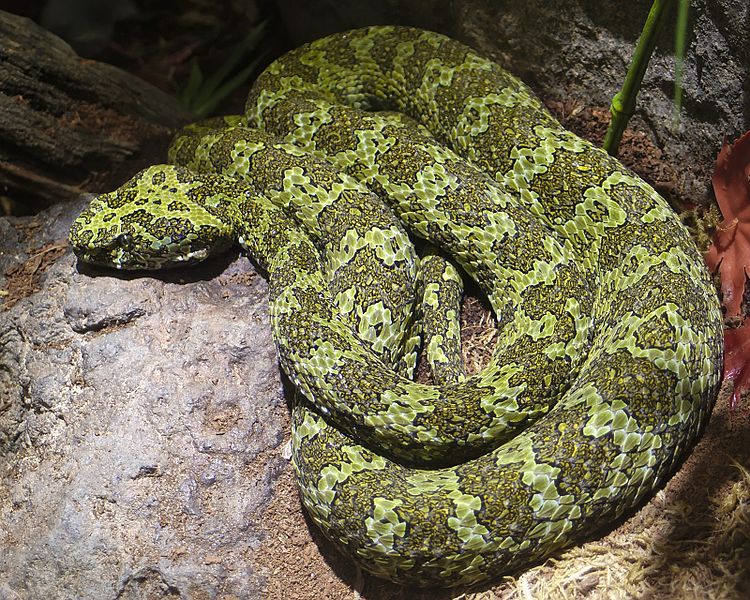
Native to the mountainous regions of China, the Mangshan Pit Viper is one of the most striking and rare venomous snakes. With emerald green and brown patterning that allows it to blend seamlessly with the forest floor, this viper is an expert ambush predator. It uses infrared-sensing pits to detect warm-blooded prey, striking with remarkable speed and precision. Its venom is highly toxic, causing rapid paralysis and tissue damage in its victims. Despite its reclusive nature, the Mangshan Pit Viper’s potent venom and fearsome appearance make it one of the most dangerous reptiles in its habitat. At lengths of up to 7 feet, it is also one of the largest vipers in Asia. Its combination of lethal venom and stealthy behavior cements its status as a fearsome reptile.
Aruba Island Rattlesnake (Crotalus unicolor)
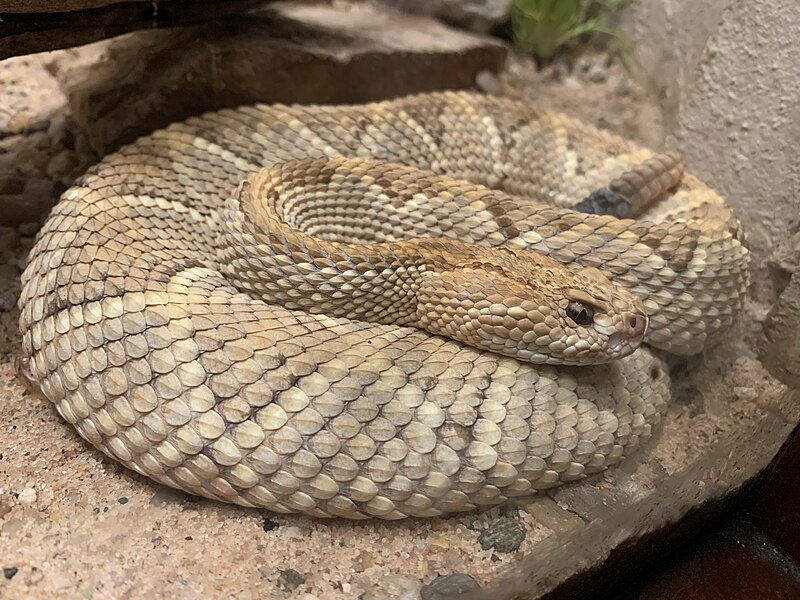
The Aruba Island Rattlesnake, one of the rarest rattlesnakes in the world, inhabits the dry, rocky hills of Aruba. With a pale, muted color palette that blends into its arid surroundings, this venomous snake is a master of camouflage. Growing up to 3 feet long, it preys on small mammals and birds, using its heat-sensing pits to locate warm-blooded creatures. Despite its small size, the rattlesnake’s venom is potent, causing severe reactions in those who are bitten. The Aruba Island Rattlesnake is a conservation priority, with its population threatened by habitat loss and human encroachment. Unlike its more aggressive mainland relatives, this snake is shy and will typically avoid confrontation unless provoked. Nonetheless, its venomous bite and secretive behavior make it a reptile to admire from afar.
Black-Headed Python (Aspidites melanocephalus)
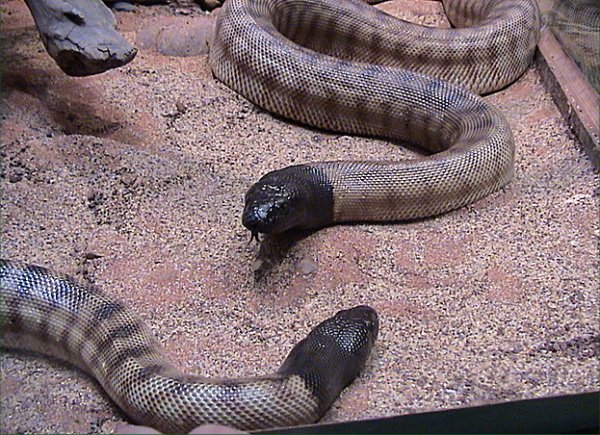
Native to northern Australia, the Black-Headed Python is a striking and unusual snake with a glossy, jet-black head and a contrasting patterned body. Growing to over 8 feet in length, this python is non-venomous, relying on its muscular coils to constrict and suffocate prey. It primarily hunts reptiles, including other snakes, and is known for its remarkable ability to withstand extreme heat. The black head acts as a solar panel, allowing the python to regulate its body temperature by basking in the sun. Although it lacks venom, its size and power make it an intimidating predator. The Black-Headed Python’s unique appearance and adaptability have made it a favorite among reptile enthusiasts. With its sleek, glossy head and impressive strength, this python is both fascinating and formidable.
Madagascar Leaf-Nosed Snake (Langaha madagascariensis)
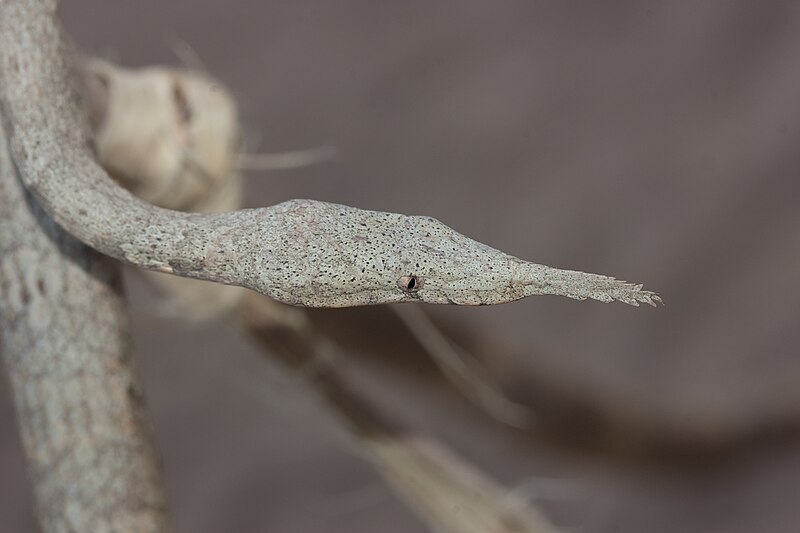
The Madagascar Leaf-Nosed Snake is a bizarre and cryptic species, known for its elongated, leaf-shaped snout. Found in the dry forests of Madagascar, this arboreal snake blends seamlessly into its surroundings, resembling a branch or a twig. Its peculiar snout, which differs between males and females, aids in camouflage and may play a role in mating displays. Although its bite is mildly venomous, it poses little threat to humans, as it primarily feeds on small lizards and frogs. The Madagascar Leaf-Nosed Snake relies on stealth and surprise to catch its prey, remaining motionless for hours before striking. Its odd appearance and secretive behavior make it a true oddity in the reptile world. Despite its small size, this snake’s alien-like looks and hunting style give it a certain eerie allure.
Rhinoceros Iguana (Cyclura cornuta)
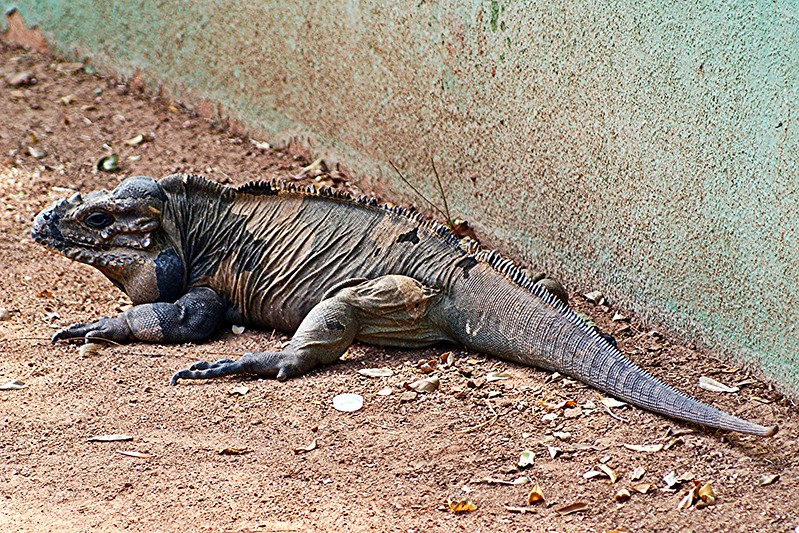
The Rhinoceros Iguana, native to the Caribbean island of Hispaniola, is named for the horn-like protrusions on its snout. These large, herbivorous lizards can grow up to 4.5 feet in length, with thick, muscular bodies and formidable claws. Although primarily plant-eaters, Rhinoceros Iguanas are known to defend their territory fiercely against potential threats. Their tough, scaly skin protects them from predators, while their strong jaws allow them to crush tough vegetation and even small animals when necessary. This species plays a crucial role in its ecosystem by dispersing seeds and maintaining plant life. With their imposing appearance and territorial nature, Rhinoceros Iguanas command respect in their natural habitat. Their dinosaur-like features and powerful build make them a fascinating relic of reptilian evolution.
Gaboon Viper (Bitis gabonica)
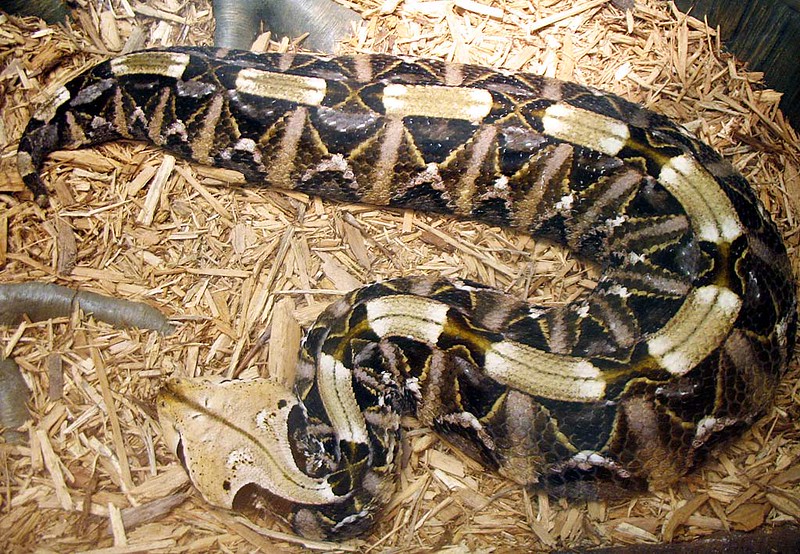
The Gaboon Viper is one of the most fearsome and iconic venomous snakes in Africa, known for having the longest fangs of any snake species—reaching up to 2 inches. Its venom is a potent cocktail of hemotoxins that can cause tissue destruction and blood clotting disorders, making it one of the deadliest snakes in the world. Despite this, the Gaboon Viper is a slow and patient ambush predator, relying on its spectacular camouflage to remain hidden among leaves. With a robust body that can grow up to 6 feet long, it strikes with incredible speed when provoked or when hunting. Its distinctive geometric patterns serve not only as camouflage but also as a warning of its dangerous nature. Though not aggressive by nature, the sheer lethality of its bite makes the Gaboon Viper a reptile to be respected and avoided. Its combination of power and stealth makes it a fascinating predator.
Crocodile Monitor (Varanus salvadorii)

The Crocodile Monitor, one of the largest lizards in the world, can grow up to 9 feet in length, with a prehensile tail that it uses to navigate the dense rainforests of Papua New Guinea. This carnivorous lizard preys on birds, mammals, and even other reptiles, using its sharp claws and teeth to capture prey. Its long, slender body allows it to move with surprising agility through the trees, making it a skilled arboreal hunter. The Crocodile Monitor has a reputation for being highly aggressive, and its bite can cause significant injury due to its powerful jaws. With sharp teeth capable of delivering a deep, painful wound, this lizard is both fearsome and awe-inspiring. It is also one of the few monitors that display curiosity, often watching humans from a distance before approaching. The Crocodile Monitor’s formidable size and predatory prowess make it one of the most fearsome reptiles in its habitat.
Vietnamese Long-Nosed Snake (Rhynchophis boulengeri)
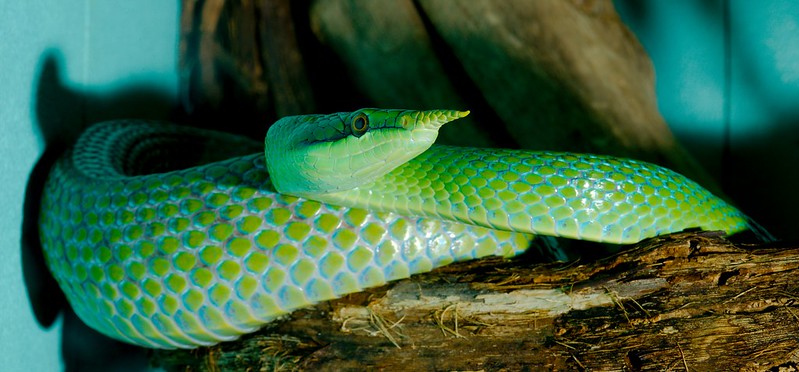
This strikingly beautiful snake, native to Vietnam and southern China, is known for its long, pointed snout, which gives it a uniquely alien appearance. The Vietnamese Long-Nosed Snake is a tree-dwelling species, using its slender body to slither effortlessly through branches in search of prey. It primarily feeds on frogs, small birds, and lizards, employing stealth and quick strikes to catch its meals. Its green and yellow coloration helps it blend into the dense foliage of the forests it inhabits. While non-venomous and harmless to humans, its unusual appearance and fast movements make it a captivating and somewhat eerie sight. The Vietnamese Long-Nosed Snake’s curious looks and secretive lifestyle make it a fascinating addition to the world of reptiles. Its stealthy behavior and distinctive appearance add to its mystique.
Eyelash Viper (Bothriechis schlegelii)
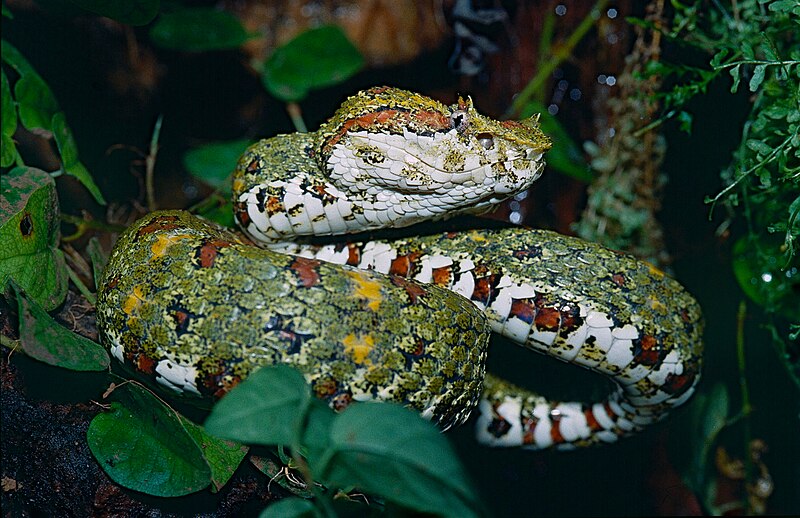
The Eyelash Viper is a small yet highly venomous snake found in Central and South America, named for the scale-like “eyelashes” above its eyes. These “eyelashes” help to break up the outline of the snake’s head, adding to its camouflage among the tropical flowers and leaves where it hides. Despite its small size, usually growing no longer than 2.5 feet, this snake packs a powerful punch with its venom, which can cause rapid tissue damage. Its vibrant coloration ranges from bright yellow to red or green, allowing it to blend into its surroundings perfectly. The Eyelash Viper uses its camouflage to ambush birds, frogs, and small mammals, striking with remarkable speed. Though beautiful, its venomous bite makes it a danger to anyone who comes too close. Its beauty and deadly nature combine to make the Eyelash Viper both fascinating and fearsome.
Indian Gharial (Gavialis gangeticus)
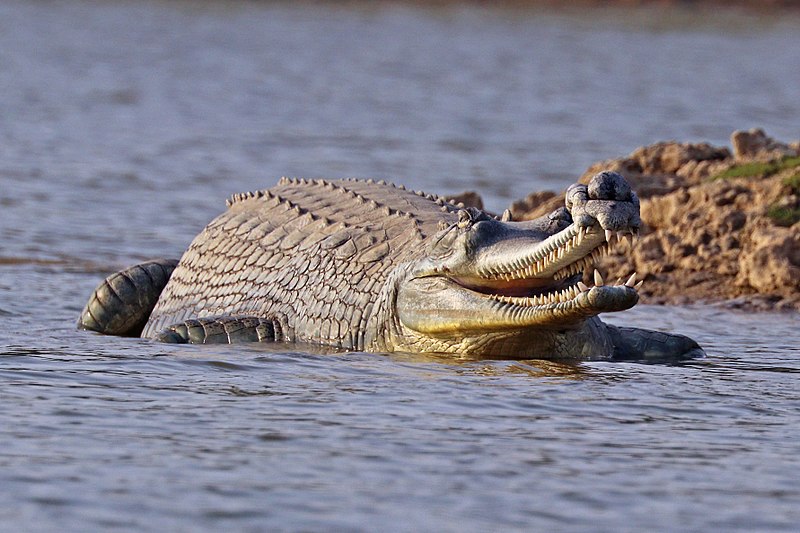
The Indian Gharial is one of the most distinctive crocodilians, known for its long, slender snout filled with over 100 sharp teeth. Native to the river systems of the Indian subcontinent, this reptile is highly adapted to a fish-based diet, using its narrow jaws to snap up prey with precision. Unlike other crocodilians, the Gharial has a relatively weak bite force, but its speed and agility in the water make it a formidable hunter. Growing up to 20 feet in length, it is one of the longest reptiles in the world, yet it poses little threat to humans due to its diet. The Gharial’s odd appearance, with a bulbous growth on the male’s snout known as a “ghara,” adds to its mystique. Although critically endangered, the Gharial remains one of the most fascinating creatures in its aquatic realm. Its unique adaptations and fearsome appearance make it an icon of river ecosystems.
Aldabra Giant Tortoise (Aldabrachelys gigantea)
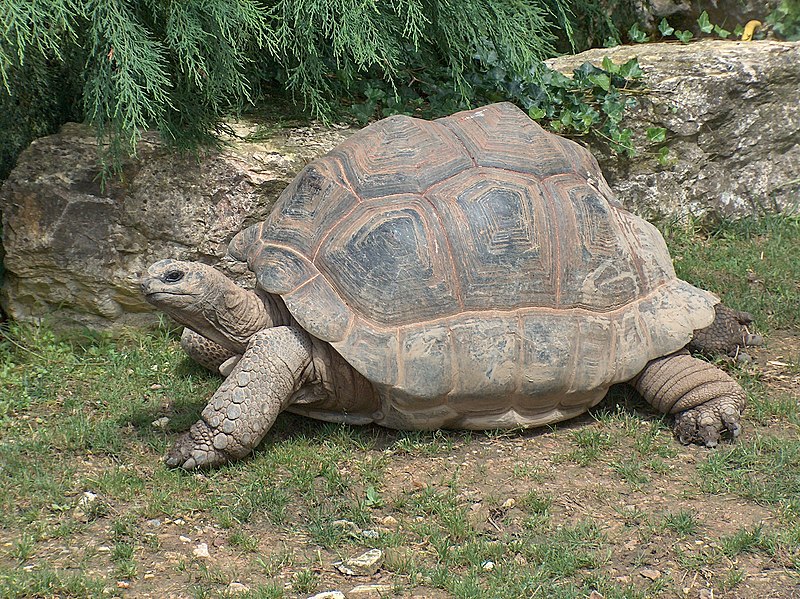
The Aldabra Giant Tortoise is a massive reptile that roams the remote Aldabra Atoll in the Seychelles. Weighing up to 550 pounds and with a lifespan that can exceed 150 years, it is one of the largest and longest-living tortoises on the planet. Despite its slow movements and herbivorous diet, the sheer size of the Aldabra Giant Tortoise commands attention and respect. It plays a crucial role in its ecosystem by dispersing seeds and maintaining vegetation through its grazing habits. While not aggressive, the tortoise’s massive size and tough, weathered shell make it an impressive sight. Its gentle nature belies its imposing appearance, but it remains a symbol of resilience and longevity. The Aldabra Giant Tortoise is a living reminder of a bygone era, fascinating in its endurance and size.
Rough-Scaled Python (Morelia carinata)
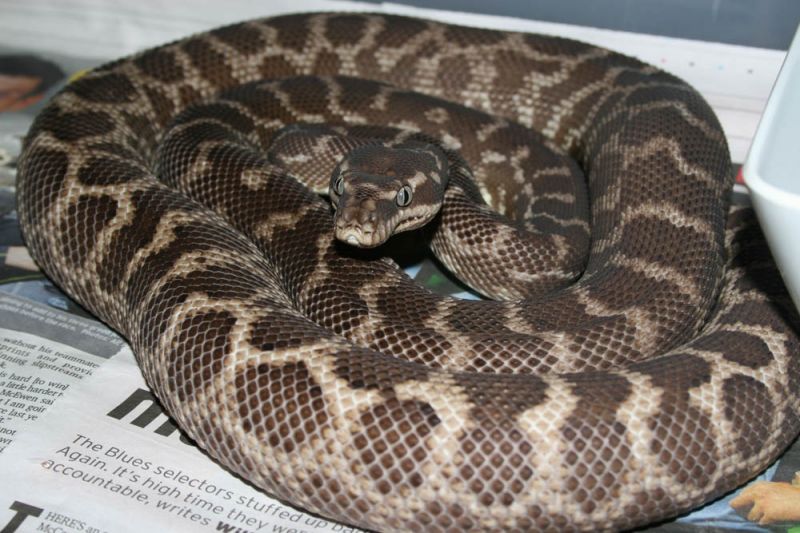
This rare and elusive python, native to the Kimberley region of Australia, is distinguished by the rough, keeled scales that give it a distinctively textured appearance. Growing up to 6 feet in length, the Rough-Scaled Python is an excellent climber, often found in rocky outcrops and caves. Its diet consists primarily of birds and small mammals, which it catches by ambushing them from above. Despite its non-venomous nature, the powerful constriction of this python is enough to subdue larger prey. The rough texture of its scales provides added grip in its rocky, mountainous habitat, helping it maintain balance. Though rarely encountered by humans, the Rough-Scaled Python’s fearsome strength and hunting prowess make it a formidable predator. Its rugged beauty and secretive behavior add to its allure.
Satanic Leaf-Tailed Gecko (Uroplatus phantasticus)
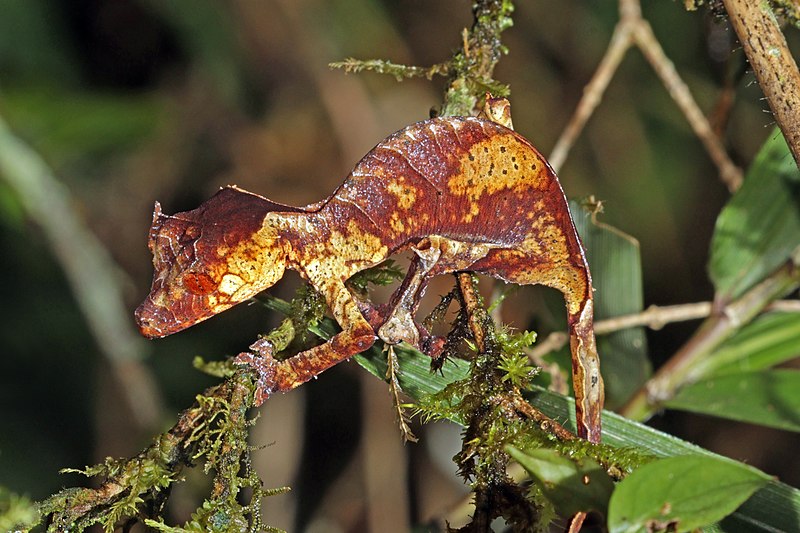
The Satanic Leaf-Tailed Gecko, native to the forests of Madagascar, is one of the most bizarre and fascinating reptiles. Its flat, leaf-shaped tail and bark-like skin provide near-perfect camouflage, making it almost invisible against tree trunks and leaves. This nocturnal predator feeds on insects, relying on its stealth and surprise to capture prey. Despite its small size—typically no longer than 3.5 inches—the gecko’s eerie, wide-eyed stare and ability to blend into its surroundings give it an otherworldly appearance. When threatened, it flattens its body against the bark, disappearing entirely from view. The gecko’s extraordinary mimicry and ghostly appearance have earned it a fearsome reputation among those lucky enough to spot one. Its eerie looks and fascinating survival strategies make the Satanic Leaf-Tailed Gecko a true marvel of nature.
This article originally appeared on Rarest.org.
More From Rarest.Org
The animal kingdom is filled with incredible creatures of all shapes and sizes, but some stand out for their sheer enormity. From the oceans to the savannas, the largest species on Earth are not only impressive in their size but also in the roles they play in their ecosystems. Read more.
Public transport has been shaped by countless innovations, and vintage buses played a significant role in this transformation. These buses, from early models with basic designs to more advanced vehicles with groundbreaking technology, helped move millions of people efficiently. Read more.
Limited edition supercars are more than just vehicles; they are a rare combination of cutting-edge technology, striking design, and unmatched performance. Built in extremely small numbers, these cars are often reserved for the wealthiest collectors and automotive enthusiasts. Read more

